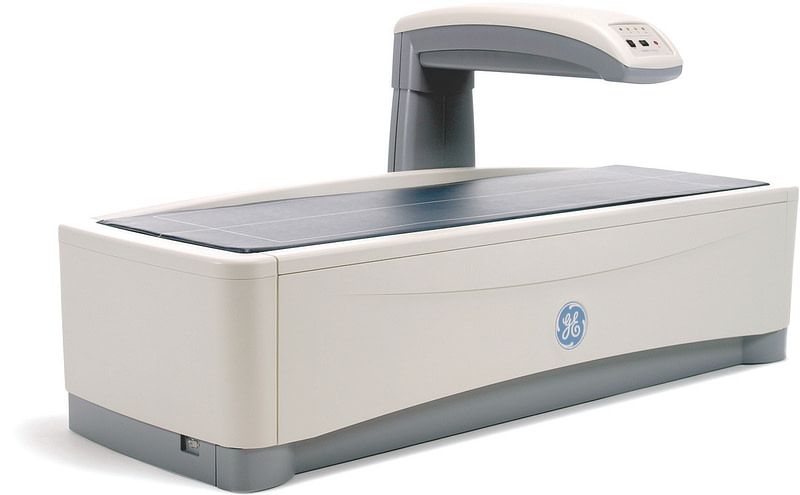- Home
- |
- Diagnostic Imaging Services
- |
- X-Ray
X-Ray
Routine X-Rays.
X-ray uses electromagnetic radiation to make images of your bones, teeth and internal organs. Simply put, X-rays allow doctors to take pictures of the inside of your body. One of the oldest forms of medical imaging, X-ray is a simple, painless medical test that can help your doctor provide you with appropriate treatment, even in emergency situations. It’s a fast, easy and safe way for your doctor to view and assess conditions ranging from broken bones to cancer.
X-Ray Benefits
X-Ray imaging is useful to diagnose bone injury and disease, such as fractures, bone infections, arthritis and cancer
Because X-Ray imaging is so fast and easy, it is particularly useful in emergency diagnosis and treatment
Modern X-Ray techniques use only a fraction of the radiation required in the early days of radiology.
Special care is taken during X-Ray examinations to ensure safety for the patient by shielding organs with a lead apron.
Risks of X-Rays
Women should always inform their doctor or technologist if there is any possibility they might be pregnant
During a procedure, a patient is exposed to a small amount of radiation.
Imaging Results
At FCDI, our radiologists will work to interpret your images within 24-48 hours. The results will be sent to your referring doctor.
Same day X-ray available,

CALL NOW | 815-398-1300
Imaging services.
High-Field Wide Bore MRI
One of the safest, most comfortable imaging techniques available.
CT-SCANs
CT-Scan is an X-ray technique that produces more detailed images of your internal organs.
LOW DOSE LUNG CT SCREENING
Offering Low Dose lung screenings if you have an order from your physician.
BONE DENSITOMETRY (DXA)
Specialized imaging technique that uses a very low dose of ionizing radiation to capture images.
Bone Densitometry (DXA) Overview
Bone densitometry, also known as dual-energy X-Ray absorptiometry (DXA or DEXA), is a specialized imaging technique that uses a very low dose of ionizing radiation to capture images — typically of the lumbar spine and hips — to assess bone loss. This test is widely used for diagnosing osteoporosis and evaluating an individual’s risk of osteoporotic fractures.
DXA is a simple, quick, and noninvasive procedure and is considered the gold standard for measuring bone mineral density (BMD).
Patient Preparation
Minimal preparation is required for a DXA scan. However, patients should:
• Inform their physician or technologist if there is any chance they may be pregnant.
• Notify their provider if they have recently undergone a barium study or received contrast material as part of a CT or nuclear medicine scan.
• Avoid taking calcium supplements for at least 24 hours before the exam.
• Wear loose, comfortable clothing, and remove any jewelry. In some cases, patients may be asked to wear a gown.
Common Uses of the Procedure
Diagnose osteoporosis, a condition characterized by gradual bone loss and structural deterioration, making bones more fragile and prone to fractures.
Monitor the effectiveness of treatment for osteoporosis or other bone-related conditions.
Evaluate fracture risk, which is influenced by various factors including age, weight, history of fractures, family history, and lifestyle habits such as smoking and alcohol use.
Who should consider bone density testing?
Bone density testing is strongly recommended for individuals who meet any of the following criteria:
- Post menopausal women not undergoing estrogen therapy
- Individuals with a personal or maternal history of hip fracture or tobacco use
- Postmenopausal women who are taller than 5 feet 7 inches or weigh less than 125 pounds
- Men with clinical conditions associated with bone loss (e.g., rheumatoid arthritis, chronic kidney, or liver disease)
- Individuals taking medications known to cause bone loss, such as:
- Corticosteroids (e.g., Prednisone)
- Anticonvulsants (e.g., Dilantin)
- Certain barbiturates
- High-dose thyroid hormone replacement
- Individuals with conditions such as:
- Type 1 diabetes
- Hyperthyroidism or hyperparathyroidism
- High bone turnover (evidenced by elevated collagen in urine)
- History of fractures resulting from mild trauma
- X-ray findings indicating vertebral fractures or other signs of osteoporosis

Make your Dexa scan appointment today.



